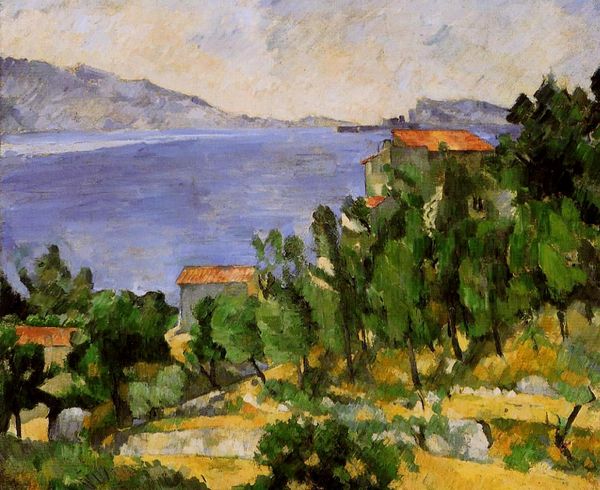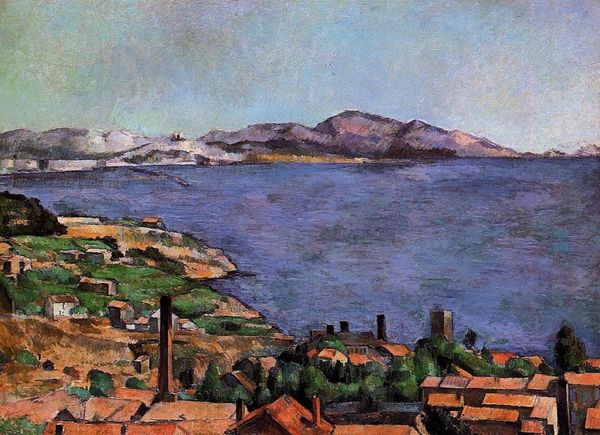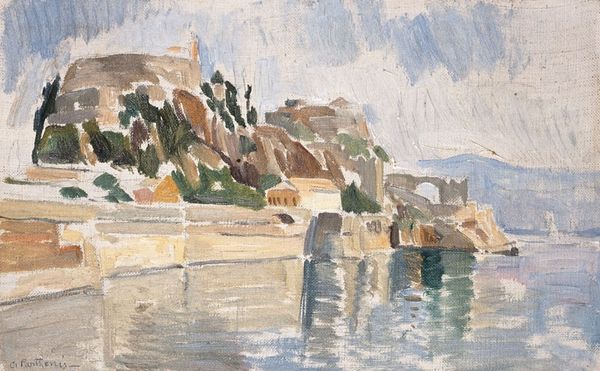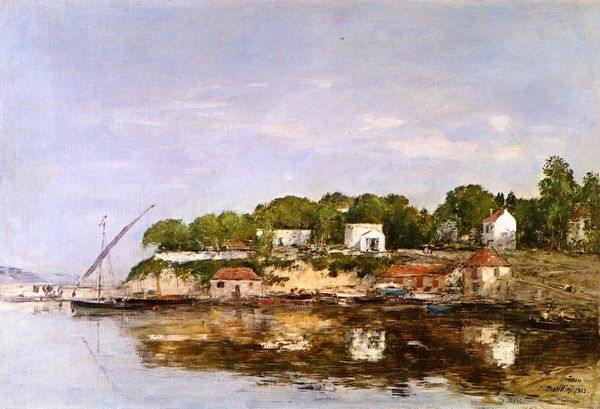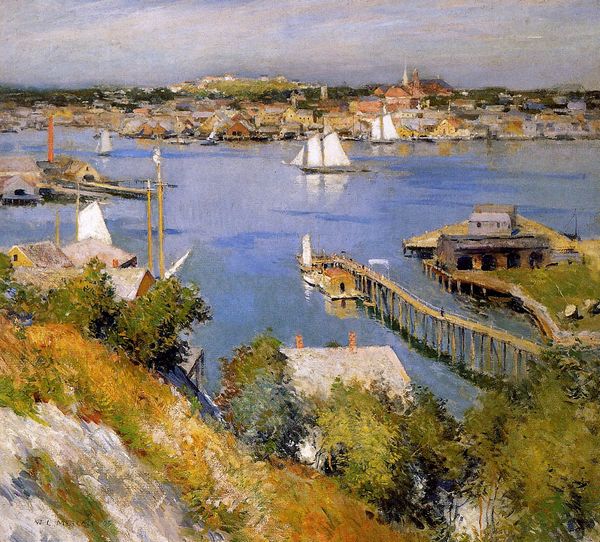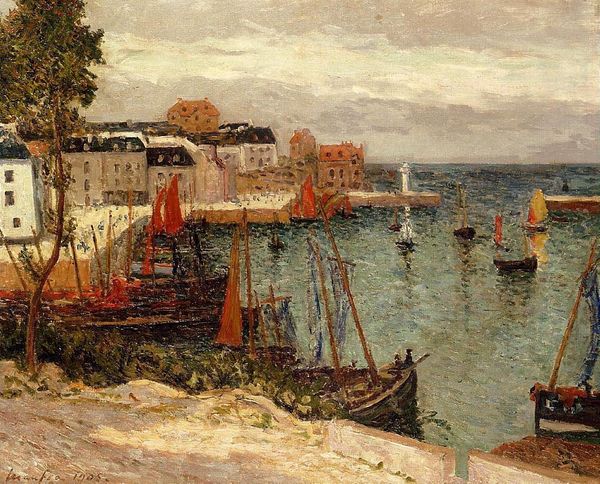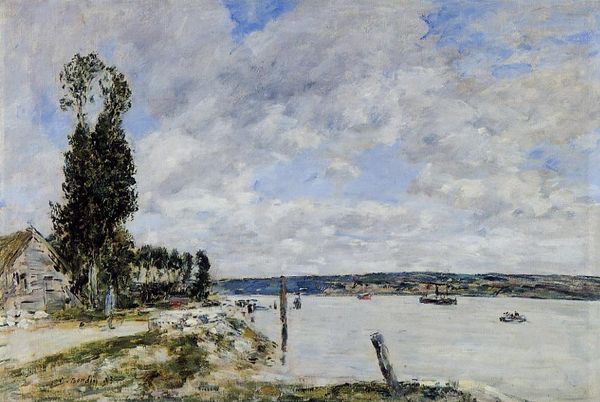
Landscape. Study after Nature 1876
0:00
0:00
paulcezanne
Rau pour le Tiers Monde Foundation, Zürich, Switzerland
Copyright: Public domain
Editor: Here we have Paul Cézanne's oil painting, "Landscape. Study after Nature," created in 1876. There's something quite serene about this landscape, a stillness that permeates the composition, but there's also a kind of disjointed quality as the various colors and structures lack clear contours. What do you notice in this work from a formal perspective? Curator: The emphasis here falls on Cézanne's innovative brushwork and spatial rendering. Observe how he builds form not through traditional modeling but via juxtaposed planes of color. There’s a flattening effect, reducing the landscape to a series of abstract shapes. Do you perceive how he uses color temperature to create depth, even in the absence of linear perspective? Editor: I do. The blues recede, while the warmer tones seem to advance. It's like he’s prioritizing color over accurate representation. But wouldn’t the absence of clear lines or traditional perspective be considered a flaw at the time? Curator: Precisely, and therein lies its radical nature. Cézanne is moving beyond the Impressionistic capturing of fleeting moments, toward a more structural investigation of the visual world. He challenges conventional notions of depth and form, exploring the intrinsic qualities of painting itself, its flatness, its materiality. The canvas is treated as an object, not just a window. What impression does that tension between representation and abstraction give you? Editor: I think it's the beginning of a new visual language, prioritizing the building blocks of painting. A precursor to Cubism, perhaps? It has me rethinking my definition of beauty in art, for sure. Curator: Indeed. It lays bare the essence of how we see, and how that vision can be reconstructed through purely pictorial means. Editor: This exercise really deepens my appreciation for the formal elements within painting and the importance of seeing them outside their traditional representative role.
Comments
No comments
Be the first to comment and join the conversation on the ultimate creative platform.
